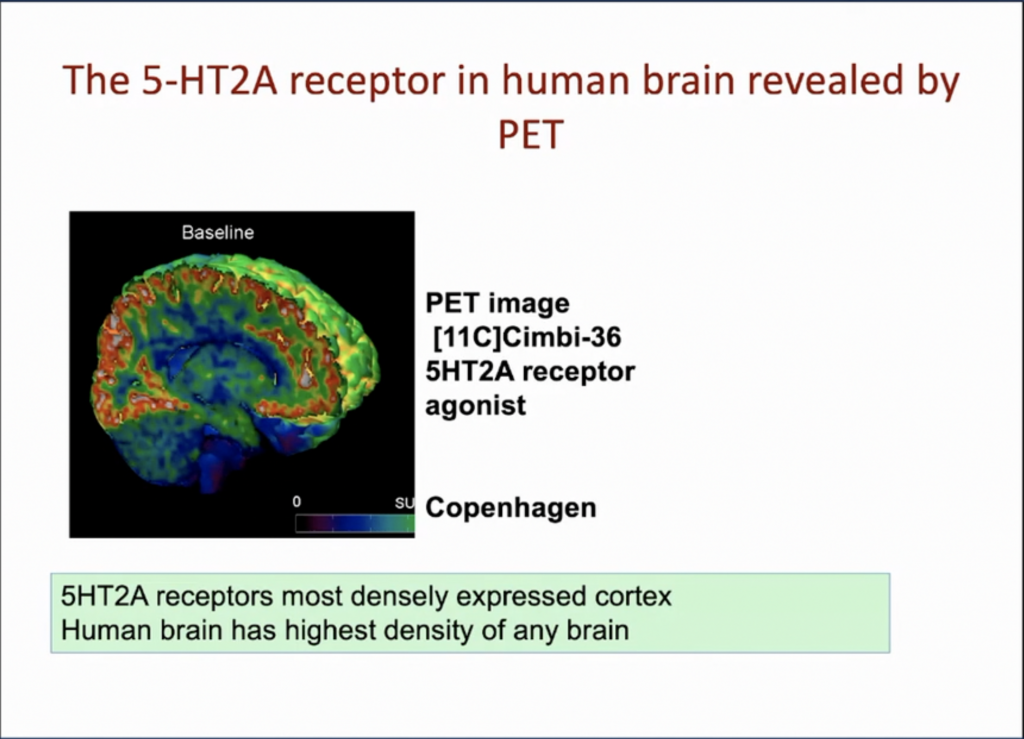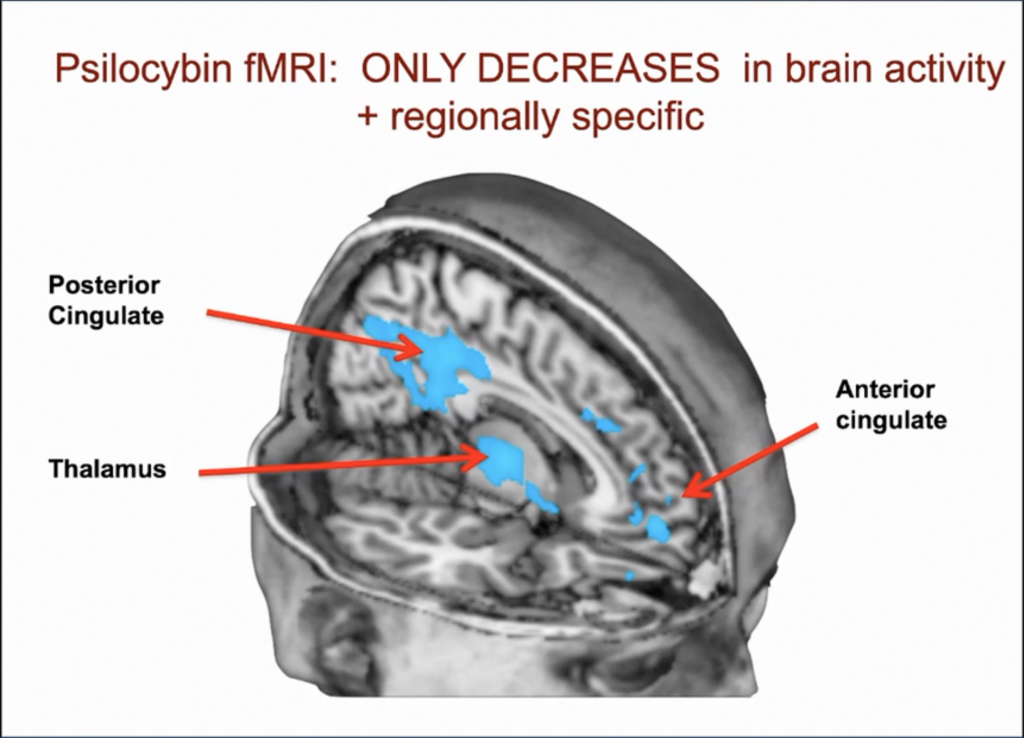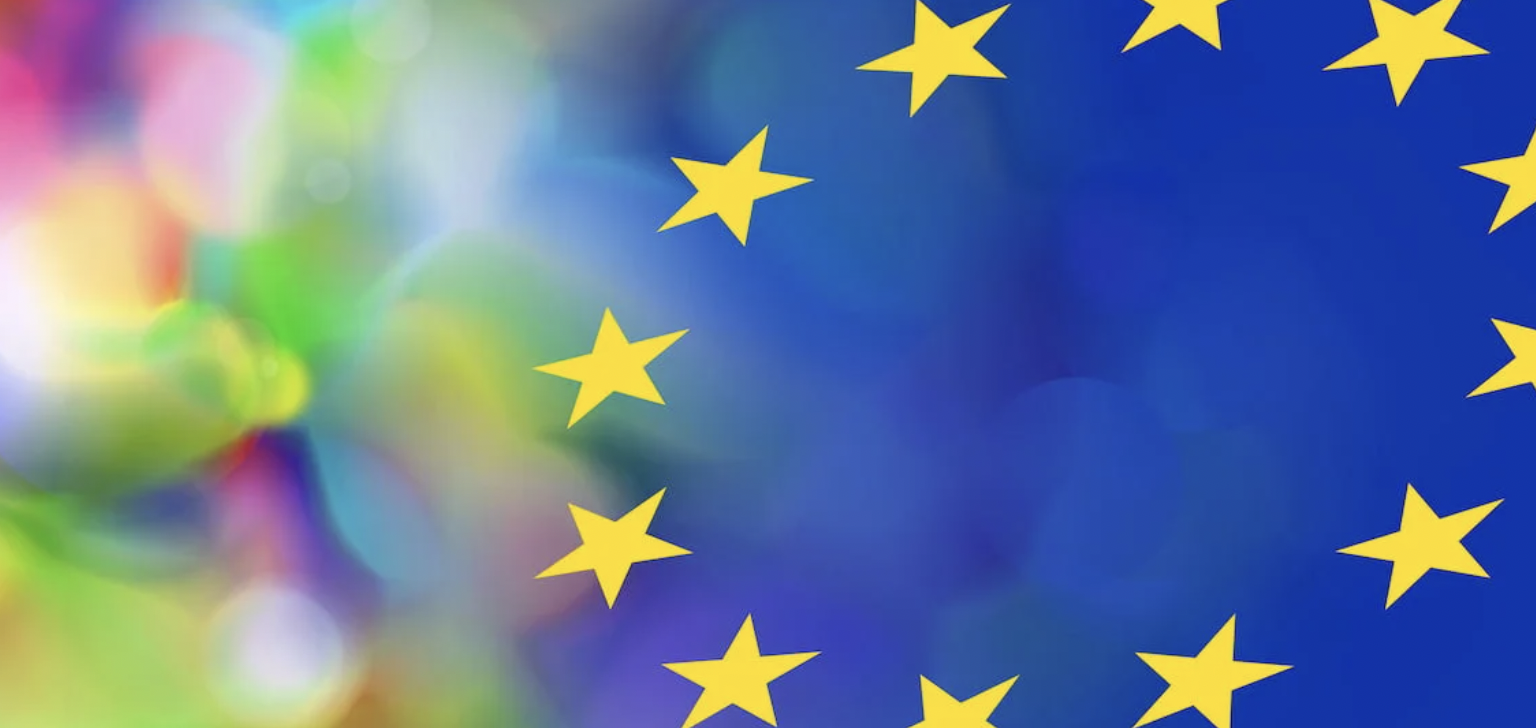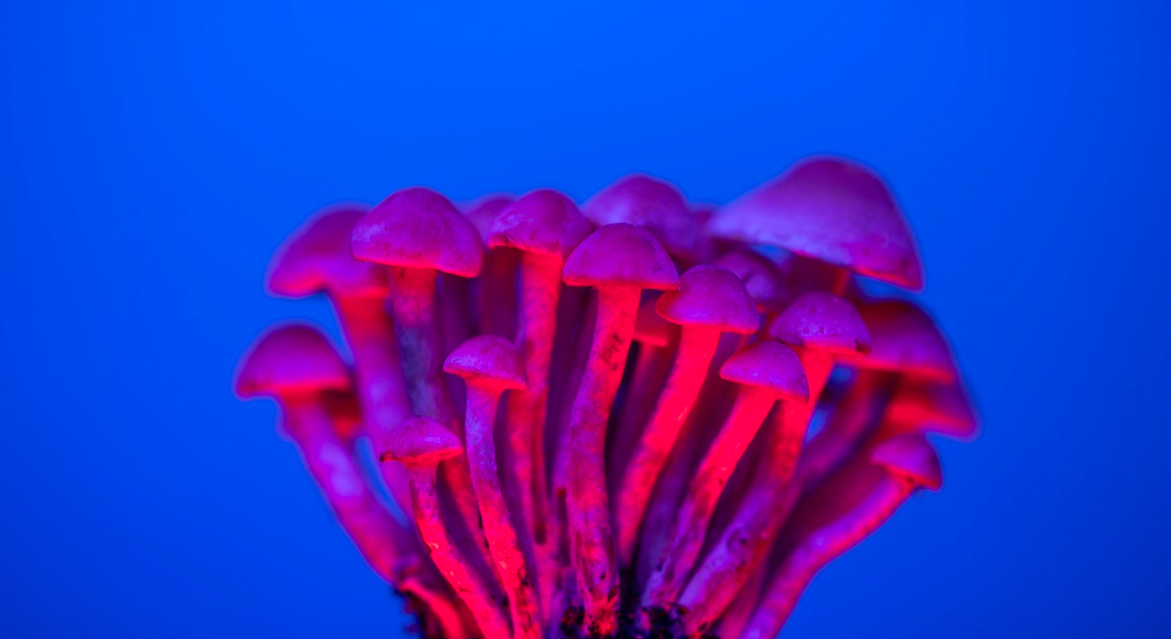
During The PSYCH Symposium in November 2020, Professor David Nutt, chairman of Awakn Life Sciences, founder of Drug Science and the director of neuropsychopharmacology at Imperial College London, delivered a virtual keynote speech on the impact of psychedelic medicines across history and culture before covering the complex and unbridled potential they hold in the treatment of mental health issues.
This article contains selected highlights from the presentation as well as a full transcription.
Ancient Uses of Psychedelic Medicines
It’s a real pleasure to be talking to you about this topic, which is something I’ve been working on now for almost 15 years and it’s great to see it coming to some kind of fruition and the first point to make is that psychedelics have been around for a very long time, you could argue that they’re part of human existence, they may even have driven some aspects of human culture, particularly interested in the historic use.
On the right hand side here, you see this Roman mosaic showing the brewing up of tea and perhaps even more importantly, on the left, here, you have 3000-year-old Greek bows, showing a Greek noble person partaking of a cocktail of wine and ergot and this is a psychedelic cocktail and you can argue that much of the creativity that came in the ancient Greek culture, both in mathematics and art, in philosophy, was driven by their experiences they had using those, that particular psychedelic cocktail.
The Modern Psychedelic Breakthrough
But the big breakthrough in terms of modern medicine came with LSD, there is Albert Hoffman and here he was, as you know, the man who synthesized LSD, a derivative of urgup, which the Greeks were using and he was surprised to find it had psychedelic effects, but was very insightful at the time.
The pharmaceutical industry were interested in the potential of LSD as a way of both treating medical illness and mental illness in particular, and also understanding the brain and have been persuaded Sandown to allow it to be used, and he used it himself. Here he is at 180 to 100 overlooking Lake Geneva, in his psychedelically inspired Villa, and he lives 102 the first British person to take LSD was probably Taylor L keys Professor of Psychiatry at Birmingham, and he lived to 103.
So, the idea that LSD actually froze your brain is probably disproven just by those two examples.
And there was great use of widespread use of LSD back in the 50s, and 60s, and it was useful for purposes it was used to model psychosis and as an experimental tool and we’re still doing that today. Professor Metal and I in King’s College are using psilocybin as a test bed in normal healthy volunteers, a test bed to produce altered states of consciousness against which we can test possible new treatments for schizophrenia and one of them has now moved from the experimental clinic into the real world being tested out in patients.
It was also used to help mental health professionals understand the nature of altered consciousness to give them insights into what it might be like to be psychotic, to have altered ways of seeing and thinking about the world. Many of the people at the psychiatrists who were given LSD in early training for this purpose less than alive today, and they will talk about it and they will remember the experiences vividly and then it was used in psychotherapy.
Psychedelic Research in the 1960’s
The NIH in the states funded nearly 140 separate studies on LSD and analyses were done by psychiatrists both in the US and in Europe and they came up with an enormous database, which largely showed that this treatment was both safe and effective. So here we are. The statement from this analysis here, treatment with LSD is not without acute adverse reactions, some people have odd reactions, some people have bad trips. But given adequate psychiatric supervision, and proper conditions or its administration, the incidence of such reactions is not great.
If you look up here, the top is Cohen review rates of psychosis which almost less than you might expect in the psychiatric population, generally, very low rates of suicide. So the fears around LSD, which were generated to get it banned were largely unsubstantiated.
Alcoholism and Psychedelics
A particularly interesting analysis done by two Norwegians who looked at the statements that were made that psychedelics by Bill Wilson, the founder of Alcoholics Anonymous, who was a protagonist of psychedelic therapy, and he persuaded the US government to fund six trials of LSD for alcoholism.
This recent meta-analysis by these two Norwegians shows that the effect size of LSD and we’re talking here about one or two doses, we’re talking get an effect size of one, which is much greater than any current therapies for alcoholism and if you estimate the number of people who’ve died prematurely from alcoholism, in the 50 years, since LSD was banned, it’s probably 100 million people worldwide.
When you think of LSD, it only works as saying 10% of them. That’s 10 million lives that could have been rescued by LSD and why don’t we use it because it’s illegal and it’s illegal because people wanted to stop recreational use.
Fighting back for Psychedelic Medicines
So this is a PET scan, and it shows the distribution of the receptors in the brain that these psychedelics work on and you can see they’re highly expressed in the cortex, particularly these parts of the cortex here the is anterior cingulate and frontal cortex, and they’re not in lower parts of the brain at the brainstem.

So, the amount you have to take is determined by this affinity in a very linear fashion and here are psilocybin mushrooms is one of them, they’re the Liberty cups and at the time, because it was so expensive, we couldn’t afford to give it orally.
We gave it intravenously and that produces a trip of about 30 minutes. But it allowed us to ask the question, what is a trip, what’s going on the brain in the trip, and where in the brain are these effects being mediated.
So this is a PET scan, and it shows the distribution of the receptors in the brain that these psychedelics work on and you can see they’re highly expressed in the cortex, particularly these parts of the cortex here the is anterior cingulate and frontal cortex, and they’re not in lower parts of the brain at the brainstem.
So, the amount you have to take is determined by this affinity in a very linear fashion and here are psilocybin mushrooms is one of them, they’re the Liberty cups and at the time, because it was so expensive, we couldn’t afford to give it orally. We gave it intravenously and that produces a trip of about 30 minutes. But it allowed us to ask the question, what is a trip, what’s going on the brain in the trip, and where in the brain are these effects being mediated.
So this is a PET scan, and it shows the distribution of the receptors in the brain that these psychedelics work on and you can see they’re highly expressed in the cortex, particularly these parts of the cortex here the is anterior cingulate and frontal cortex, and they’re not in lower parts of the brain at the brainstem.
So the five AC receptor is a cortical receptor and of course, the cortex is where we do what our high level human thinking and experiencing and memory, etc.
So, we did the first FMRI study of psilocybin and we found to our amazement, that although people were having vivid and colorful hallucinations, and some people were floating out of the scanner, and one went to garden bowed at the foot of God, they didn’t, there was no increase in activity in the brain at all.
In fact, all we found were areas of the brain which showed decreased activity and at first, we thought that just must be wrong, it couldn’t be the case.
So we repeated the whole experiment using a different form of FMRI imaging called bold and came up with exactly the same results and we published them in 2012, in the in PNAS, and what was cut, you know, very fascinating was that these, there were three regions where psilocybin dampened down activity blue is less activity of serious Angular, anterior cingulate, and thalamus and how does that lead to hallucinations?

Well, we think that’s because you switch off the parts of the brain, which organize the normal reconstruction of visual and other sensory inputs.
So we can make sense of the hallucinations and that was interesting, but what we didn’t expect to find and this is where the whole therapeutic area began, concept began to develop was the fact that psilocybin attenuated activity in this part of the brain or this part of the brain is called the subgenual.
It’s the, one of the most frontal parts of the cingulate cortex and that’s a critical emotional part of the emotional circuit and this part of the cortex, this is one of the parts, it’s been shown by many studies to be involved in depression.
Psilocybin v Traditional Depression Treatments
What is depression? Depression is a disorder in which people are ruminating about themselves, which is what the default mode network does. But in a very negative and hostile way people get locked into this very, these negative circuits, these negative patterns of thinking and in fact, this study showed that this over activity of the default mode was driven by this sub genuine singlet.
So, we had two reasons to explore the value of psilocybin in depression, it can disrupt this network, and dampen down this driver.
We did a study, we did the first study of psilocybin and depression. We gave people 25 milligrams trip exactly the same doses were given in the scanners. These are people with resistant depression, they all failed on at least two somewhat failed on over 10 different antidepressants, they all failed on CBT and you can see that all of them got a bit better after one week, and some of them got dramatically better.
Some people were cured. About a third were cured. After just a few days in itself, you know, the effect came on almost immediately, but at one week, you see, we’d halved the depression scores and actually, the mean depression scores stayed really low, up to five weeks and some people have stayed pretty well ever since which is five, three or four years later.
But the majority sit back and this tells us two things, it tells us that psilocybin is extremely powerful, the most powerful treatment of resistant depression we’ve ever had, a single dose can produce in some people remission, and in many people enduring improvements in mood.
But it also tells us that depression is a state, which reapplies itself, it’s almost it’s like it’s you can squash it down with psilocybin or disrupt its processes, but eventually it kind of fights back and that has led us to think how we might deal with the recurrence and that will probably require either some kind of prophylactic therapy or giving maybe regular doses, maybe two trips a year, for instance and interestingly, just last week, the group at Johns Hopkins replicated this finding, and they showed that psilocybin produces a two doses, which is a powerful attenuation of depression, in the people that get it and the people that aren’t getting it, the people just sitting in the waiting to get it eight weeks later, their mood doesn’t change at all.
So this is called a waiting list controls that in it confirms what we found that psilocybin has powerful antidepressant effects.
But more than that, we were able to do brain imaging, to inquire about the nature of the changes produced in the brain by psilocybin and compare them with those produced by standard antidepressants like SSRIs and one of the most reliable findings of antidepressant activity, is it antidepressants dampened down the amygdala response to fearful faces, they dampen down your fear center in the brain.
How Psilocybin Works in the Brain
So how do these changes occur?
Well, this is a diagram that has become almost a meme for our work and it shows the changes in connectivity which occurs in the brain for psilocybin and the same is true for LSD.
Each of these images has the same number of connections. But in the normal brain under placebo, most of the connections around the edge is called the small world brain, visual cortex or the visual cortex, auditory cortex, auditory cortex, of course, there’s got to be crosstalk. Otherwise, you wouldn’t move your arms if you saw something flying into your face.
But most of the talk is around the edge. Whereas with psychedelics, there’s a great deal more cross talk and that cross talk allows connections to be made, which basically never existed since you were a child and it allows people to remake connections which have been aborted, and also to make connections which help them see things that they’ve been repressing or not being able to remember.
So this increased connectivity allows people to reconnect with the real world and themselves.
What’s Next for Psychedelics?
So where’s it going now? Well, there have been positive trials, open trials in tobacco addiction and alcohol addiction and so addiction is an interesting target for psychedelic interventions.
We’re going to be soon reporting our head to head of psilocybin versus acetone, a problem that’s been submitted to a review known as anorexia studies going on in john Hopkins and imperial, we’re setting up an OCD trial and we’re also looking at to heroin addiction, which could be a very important target for this kind of intervention and there’s also the possibility of them working in pain syndromes, particularly neuropathic pain and you might say, well, these are all very different disorders, but at one level, they’re not.
They’re all disorders in which people get locked into a mode of thinking from which they can’t escape. So I’ve talked about depression and the negative thinking about the self with addiction, people are addicted, they’re thinking always about their alcohol, their tobacco, they haven’t got it and red sea they’re thinking about weight and food, OCD, they’re thinking about contamination, etc.
These are all what we call internalizing disorders, and they’re almost Certainly all associated with deregulation of the default mode network that we think therefore disrupting that may help people escape from this unnecessary and maladaptive thinking that they are engaged with. But of course, the legal status is still a huge problem.
With the aim of delivering insight, intelligence and data for investors, regulators and operators, The PSYCH Symposium will be returning in 2021 with a programme of live events featuring leading figures from across the international psychedelics sector.
Join our mailing list to keep up with the latest industry updates and news on our live events, here.
George Brown


